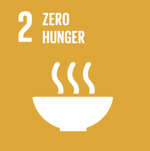Towards a sustainable future. Innovations in quinoa irrigation and fertilization management
Improve profitability and food security through the incorporation of computer tools in agronomic decision for quinoa for a wide geographic region (25%) of the total quinoa area in South America.
Context of the story
Quinoa is one of the crops with the greatest global expansion and there is a lot of information on its ecophysiology that, however, is disconnected from crop management practices. Ecophysiology is the bridge between physiology and management that allows us to recognize gaps and discuss alternatives that reduce them and allow the efficient use of resources. The inefficiency in the use of resources in environments such as the inter-Andean valleys, the Peruvian coast and southern Chile, despite their richness in nutrients and water availability, is a determinant of the low yields obtained. In this project, knowledge will be generated for these regions with high performance potential. Currently, there is no comprehensive resource management plan adapted to the characteristics of these environm
Sustainable management of irrigation and fertilization in quinoa
The implemented initiative
The project aim is to generate and transfer a Latin American online tool for agronomic management of quinoa to optimize strategies for choosing cultivars, sowing dates, irrigation and fertilization in the Andean region of Peru and south-central Chile based on knowledge about its ecophysiology. The objectives are i) Generate an online model for the development of quinoa crop CRONOS-QUINOA (http://cronos.agro.uba.ar), ii) Determine yield and water consumption scenarios in potential and dryland conditions using the AQUACROP model (http://www.fao.org/aquacrop), iii) Generate an online nitrogen fertilization calculator and iv) Transfer and disseminate the results of the project to farmers, consultant and students linked to quinoa crop in the study regions.
Digital and accessible tools based on crop ecophysiology for agronomic decision in quinoa
The technological solution
Optimization of decision on water management and fertility, based on knowledge about quinoa ecophysiology and information of climate and soils, providing accessible tools to farmers and technicians such as simulation models (CRONOS-QUINOA, AQUACROP and online calculator nitrogen fertilization) of free access calibrated for quinoa in those environments plus technical manuals.
Type of project
Results
This project proposes to reduce the gaps in yield associated with inadequate management of irrigation and fertilization in quinoa. To achieve this purpose, the generation of knowledge will be combined with the development of free access computer tools for farmers, technicians and agricultural professionals. In this way, the environmental impact will be reduced, for example that associated with inadequate or excessive use of irrigation or nitrogen. By increasing yields for a greater efficiency in the use of resources, it will contribute to improving the quality of life of farmers, via an increase in the profitability of their establishments. If the objectives proposed by the project are achieved, the average water productivity could be raised from 6 kg grain ha-1 mm-1 estimated for Andean environments to the upper value of this efficiency (13.3 kg grain ha-1 mm-1). This would imply a doubling of yields for a determined level of water availability.

 Back to the project
Back to the project Argentina
Argentina Chile
Chile Ecuador
Ecuador Peru
Peru







